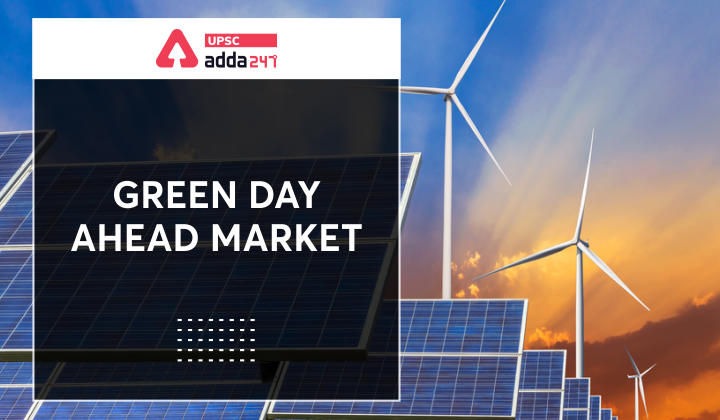Table of Contents
Green Day Ahead Market: Relevance
- GS 3: Infrastructure: Energy, Ports, Roads, Airports, Railways etc.
Green Day Ahead Market: Context
- Recently, Ministry of Power has launched the Green Day Ahead Market (GDAM) to give a boost to the renewable energy sector of the country.
Green Day Ahead Market: Key points
- GDAM is a unique product that has been launched for the energy market.
- It will enable electricity generation and distribution companies to buy or sell renewable energy through open access.
Green Day Ahead Market: Significance
- GDAM will provide competitive price signals, besides offering an opportunity to the market participants to trade in green energy, in the most transparent, flexible, competitive, and efficient manner.
- The market-based competitive prices will provide another option to renewable generators to sell power as well as accelerate the renewable capacity addition.
- It will help realise the Government’s vision of building India as a sustainable and efficient energy economy.
- The introduction of GDAM is expected to create a domino effect that will lead to a gradual shift from PPA based contract to market-based models which will build and deepen the markets to the next level, paving the way for India to meet its ambitious target of 450 GW green capacity by 2030.
- The other benefits of participating in the GDAM would be reduction of curtailment of green power, unlocking untapped renewable energy potential, ensuring instant payment to RE generators.
- Similar to National Hydrogen Mission, the objective of Green Day Ahead Market is to reduce dependency on coal for energy.
Green Day Ahead Market: How will the GDAM work?
- The Green Day-ahead market will operate in an integrated way with the conventional day-ahead market.
- The Exchanges will offer the market participants to submit bids together for both conventional and renewable energy through the separate bidding windows.
- The clearance will take place in a sequential manner – renewable energy bids will be cleared first in accordance with the must run status of the renewables, followed by conventional segment.
- There will be separate price discoveries for the both the conventional and renewables.
Renewable energy in India
- India is the world’s third largest consumer of electricity and the world’s third largest renewable energy producer with 38 percent (136 GW out of 373 GW) of total installed energy capacity in 2020 from renewable sources.
- India has also set a target of producing 175 GW by 2022 and 450 GW by 2030 from renewable energy.
- The GDAM comes at a time when the country is facing a shortage of coal.
- Types of renewable energy: solar energy, wind energy, hydropower energy, among others.
- Read about Status of Renewable Energy in India
- Read about Renewable Energy Land Use in India




 TSPSC Group 1 Question Paper 2024, Downl...
TSPSC Group 1 Question Paper 2024, Downl...
 TSPSC Group 1 Answer key 2024 Out, Downl...
TSPSC Group 1 Answer key 2024 Out, Downl...
 UPSC Prelims 2024 Question Paper, Downlo...
UPSC Prelims 2024 Question Paper, Downlo...
